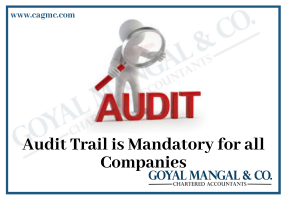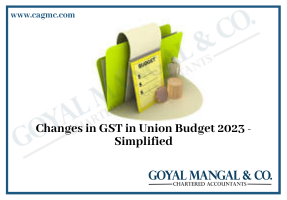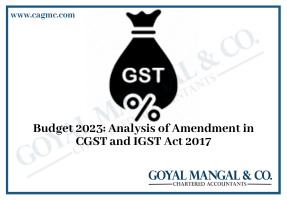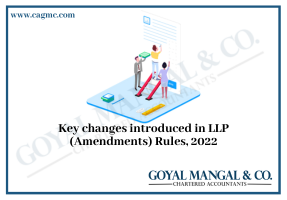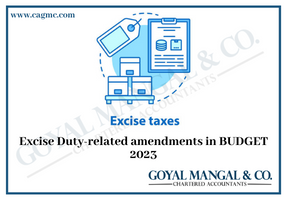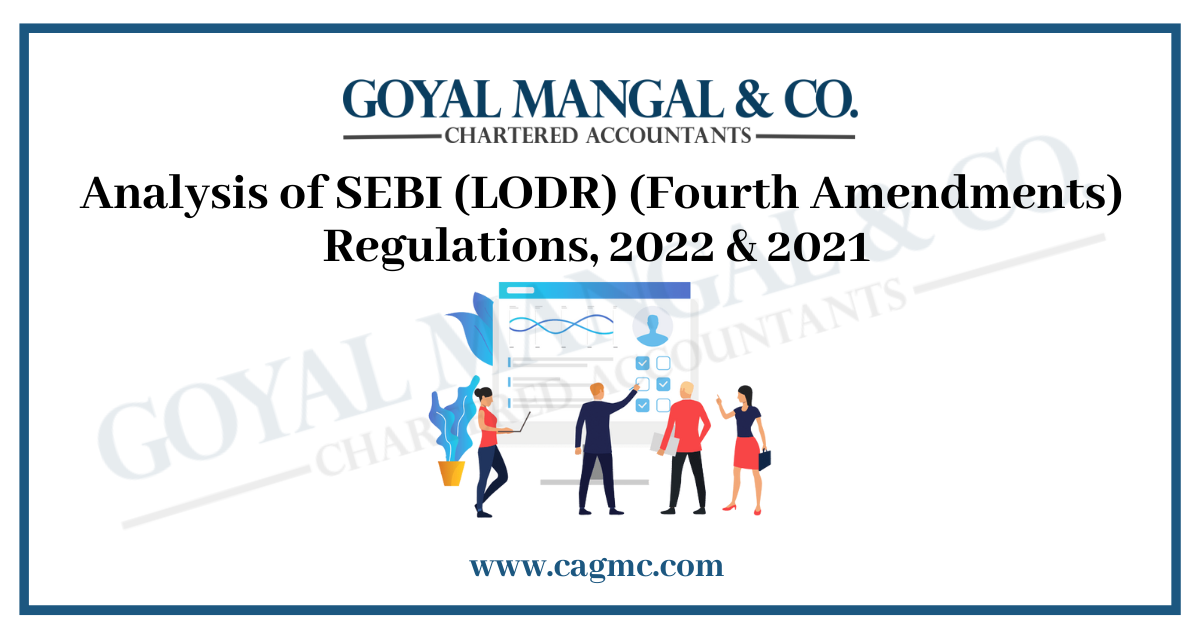
The Securities and Exchange Board of India, vide Notification No. SEBI/LAD/-NRO/GN/2022/80 dated April 25, 2022, issued the SEBI (LODR) (Fourth Amendment) Regulations, 2022 to amend the SEBI (LODR) Regulations, 2015.
The erstwhile Securities and Exchange Board, vide notification dated August 13, 2021, amended the Securities and Exchange Board of India (Listing Obligations and Disclosure Requirements) Regulations, 2015 (“SEBI LODR”) and the said amendment is called the Securities and Exchange Board and Stock Exchanges of India (Listing Obligations and Disclosure Requirements) (Fourth Amendment) Regulations, 2021 (the “Amended Regulations”).
In this article we will discuss the major changes in Analysis of SEBI (LODR) (Fourth Amendments) Regulations, 2022 & 2021.
|
Table of content |
Securities and Exchange Board of India (SEBI)
The Securities and Exchange Board of India (SEBI) is a statutory regulatory body established by the Government of India in 1992 to regulate the securities market in India and protect the interests of investors in securities.
SEBI has the power to regulate and perform functions such as inspecting the books of stock exchanges and requiring regular returns; approving bye-laws of stock exchanges; inspecting the books of financial intermediaries such as banks; and compelling certain companies to be listed on stock exchanges one or more exchanges and handles the registration of brokers.
Powers and functions of SEBI
To fulfil its objectives, SEBI performs the following tasks: protective functions, regulatory functions, and developmental functions.
Functions performed by SEBI as part of its protective functions are:
- Price manipulation is restricted.
- Insider trading is prohibited.
- Unfair and fraudulent business practises are prohibited.
- Encourages a fair code of conduct in the security industry.
- It requires efforts to educate investors on ways to better evaluate investment opportunities.
As part of its regulatory functions, SEBI performs the following roles:
- Drafted a code of conduct, rules and regulations for the regulation of brokers, underwriters and other intermediaries.
- SEBI also regulates corporate takeovers.
- Regulates and registers the activities of stock transfer agents, stockbrokers, merchant bankers, securities administrators, and others associated with the stock exchange.
- It also regulates and registers mutual funds.
- Performs audits and stock market investigations.
As part of its developmental functions, SEBI performs the following roles:
- Facilitates the training of intermediaries.
- It focuses on supporting the activity of the exchange with an acceptable and flexible approach.
SEBI (LODR) Regulation 2015
The Listing Obligations and Disclosure Requirements Regulations (LODRs) form one of the most important mandates for SEBI. The regulation covers the extent of transparency and disclosure that listed companies must comply with. In addition to mandatory disclosure standards, the regulation also regulates the listing agreement that must be concluded between the stock exchange and listed companies.
The contract consists of the conditions of administration and management, disclosure, and conditions for maintaining the company’s listing status. However, the new LODR Regulation 2015 intends to merge all the previous amendments into one document to make the document uniform across different segments of the capital market.
The SEBI (LODR) Regulations, 2015 contain the following:
- Disclosures and obligations to be acknowledged by listed company compliance officers
- Listing obligations are uniform for all listed companies.
- Different obligations for certain types of securities
- Separation of initial issue standards and post-IPO standards
- Communication of fundraising activities of companies
- Establishing schedules for reporting exchanges of certain events
- Bringing Small and Medium Enterprises into Compliance with SEBI Regulation (LODR).
Amendments through SEBI (LODR) (fourth amendment) Regulations, 2021
Following are the amendments through SEBI (LODR) (Fourth Amendment) Regulations, 2021
| Regulations | Existing regulation | Amended regulation |
| 52(4) – Disclosure in financial results. | It was mandatory to disclose the financial results of the listed entity.
a) credit rating and credit rating change b) in the case of non-convertible debt securities, available asset coverage; d) the previous due date for paying interest or dividends on non-convertible redeemable preference shares/repayment of principal on non-convertible preference shares/non-convertible debt securities, and whether or not they were paid; and e) the next due date for payment of interest or dividend from non-convertible priority shares/principal, as well as the amount of interest or dividend payable and the redemption amount; |
As per amended regulation the sub clauses (a) (b) (d) (e) of clause (4) of regulation 52 shall be omitted. |
| 57-Other submissions to stock exchange | Other submissions to stock exchange | Intimations/ Other submissions to the stock exchange |
| 57(2)-Undertaking to the stock exchange. | It was mandated to submit to the exchange an undertaking that the entity submits all required documents and information to the bond administrator annually. | The sub-section shall be omitted |
| 58-Documents and information to holders of non – convertible securities. | Documents and information for holders of non-convertible debt securities and non-convertible preferred stock. | Documents and information to holders of non – convertible securities. |
| 58(1)(a)- Soft copies of full Annual Reports | Soft copies of the full annual report to all holders of non-convertible preference shares who have registered their email address (es) for this purpose. | Soft copies of the full annual reports to all holders of non-convertible securities who have registered their email address (es) with either a listed entity or any depositary. |
| 58(1) (b) – Hard copy of statement containing the salient features of annual report. | A hard copy of the statement containing the main features of all the documents as referred to in Section 136 of the Companies Act, 2013 and the rules therein for holders of non-convertible preference shares who have not so registered. | A hard copy of the statement containing the main features of all documents as mentioned in Section 136 of the Companies Act, 2013 and the rules therein for holders of non-convertible securities who have not so registered. |
| 58(1) (c) – Hard copies of full annual reports. | Printed copies of the full annual report to those holders of non-convertible debt securities and non-convertible preferred stock who so request. | Printed copies of the full annual report to holders of non-convertible securities who so request. |
| 58(1) (d) – Half yearly communication. | Half-yearly communication as specified in sub-regulations (4) and (5) of regulation 52 to holders of non-convertible debt securities and non-convertible preference shares. | The sub-section shall be omitted. |
| 61 (1) – Payment of interest or dividend | The listed entity shall ensure timely payment of interest or dividend on non-convertible redeemable preference shares or redemption payment:
Provided that the listed entity shall not declare or distribute any dividend where it has failed to pay interest on the debt securities or to repay them or to create security under the terms of the issue of the debt securities: Provided further that this requirement shall not apply in the case of unsecured debt securities issued by regulated financial sector entities eligible to meet the capital requirements established by the relevant regulators. |
The listed entity will ensure timely payment of interest or dividends
non-convertible debt securities and/or non-convertible redeemable preference shares or redemption payment: Provided that the listed entity shall not grant or distribute any dividend for which it has fallen into default in the payment of interest on the debt securities or in the repayment thereof or in the establishment of security under the terms of the issue of debt securities. |
Amendments through SEBI (LODR) (fourth amendment) regulations, 2022
Following are the amendments through SEBI (LODR) (Fourth Amendment) Regulations, 2021
| Regulation | Existing Regulation | Amended Regulation |
| Regulation 40(7) | (7) The listed entity must comply with all procedural requirements listed in schedule VII regarding the transfer of securities. | (7) The said entity must comply with all the procedural requirements set out in schedule VII relating to the transfer and transfer of securities. |
| Regulation 61(4) | (4) The said person must meet the requirements set out in Regulation 40 for the transfer of securities, including the procedural requirements set out in schedule VII. | (4) The said person must meet the requirements set out in Regulation 40 for the transfer of securities, including the procedural requirements set out in Annex VII. |
| Schedule VII | Transfer of securities [See regulations 40(7) and 61(4)].
Transfer and Transfer of Securities [See Regulations 40(7) and 61(4)].
C. Additional documentation requirements in case of transfer of securities (deleted). |
C. Documentation requirements in case of transfer of securities.
(1) In the case of the transfer of securities, when the securities are held in one name with a nomination, the following documents shall be submitted: a) Duly signed transfer request form by the appointed person; b) The original of the death certificate or a copy of the death certificate certified by a named person subject to verification with the original or a copy of the death certificate duly certified by a notary public or an official; (c) Self-attested copy of Permanent Account Number Card of the candidate issued by the Income Tax Department (2) In the case of the transfer of securities, when the securities are held in one name without nomination, the following documents shall be submitted: a) Notarized affidavit of all legal heirs made on non-judicial stamp paper of reasonable value, for the purpose of identification and claim to legal ownership of securities: Provided that where the legal heirs/claimants are named in the Succession Certificate or Will or Will or Letters of Administration as may be applicable in terms of the Indian Succession Act, 1925 (39 of 1925) or the law Certificate of inheritance or its equivalent certificate issued by a competent state authority, only an affidavit of such legal heir/claims/claims is sufficient; b) Duly signed transfer application form by the legal heir/claimants; c) The original death certificate or a copy of the death certificate certified by the legal heir/claimant(s), subject to verification with the original or a copy of the death certificate duly certified by a notary public or official; (d) Self-attested copy of permanent account number card of legal heir/claimant, issued by Income Tax Department; (e) A copy of the succession certificate or will or testament or letter of administration or court order as may be applicable within the meaning of the Indian Succession Act, 1925 (39 of 1925) or the certificate of intestate succession or its equivalent issued by a competent Government authority, attested by the legal heir/claimant(s) subject to verification with an original or duly authenticated by a notary or public official: Provided that, upon presentation of a copy of the Will or Certificate of Intestate Succession or its equivalent certificate issued by the appropriate governmental authority, such declaration shall be accompanied by a notarized bond of indemnification from the legal heir(s) to whom the securities are transferred, in the format prescribed by the Board of Directors: Provided further, that in the event a copy of the statutory probate certificate or its equivalent certificate issued by the appropriate governmental authority is submitted, there shall also be attached an objection from all non-claimants stating that they have waived their rights to claim the transfer of securities; (f) in cases where the value of the securities is up to five lakh rupees per listed entity in case of securities held in physical mode and up to fifteen thousand rupees per beneficial owner in case of securities held in dematerialized mode, as on the date of application and if the documents mentioned in paragraph e) are not available, the legal heirs / applicants can submit the following documents: (I) No objection certificate from all the legal heirs stating that they have no objection to such transfer or a copy of the deed of family settlement executed by all the legal heirs duly attested by a notary or gazette officer; and (ii) A notarized indemnity bond executed on non-judicial stamp paper of reasonable value indemnifying the Share Transfer Agent / Listed Person, in the format specified by the Board of Directors: Provided that the listed entity may, at its discretion, increase the value of the securities from the threshold limit of five lakh rupees, in case of securities held in physical mode. |
Conclusion
SEBI LODR, 2021 and 2022 brings various changes in the existing listing agreement and now it is the duty and responsibility of us the Corporates & Professionals to work with the capital market regulator to implement the regulations as intended by the regulator. As the saying goes, “Government makes the laws, but professionals implement them“.



